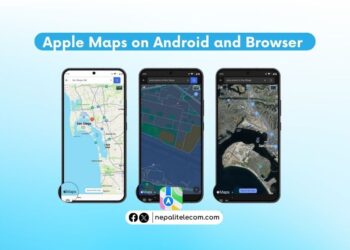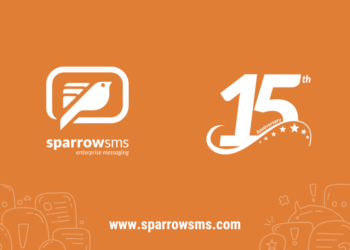Check our list of the top 5 video conferencing apps for 2024 and their features.
Since COVID-19 forced lockdowns worldwide, work from home has become the new normal. Whether it’s online classes, business meetings, or training, video conferencing apps have taken over our lives. They have brought us both convenience and utility at affordable costs or even for free.
Just after few months since the lockdown began, major IT firms have launched their own apps claiming to cater to a “better” user experience than others. While some have thirsted themselves to peak, others are gaining prominence with exciting features.
Check out: Top 10 Best use of the Internet in COVID-19 Lockdown
Top 5 Video Conferencing Apps
Let’s check out the top 5 video conferencing apps we have drawn for you on the basis of their popularity and features. Find out which have made it into our ranks.
5. BlueJeans by Verizon
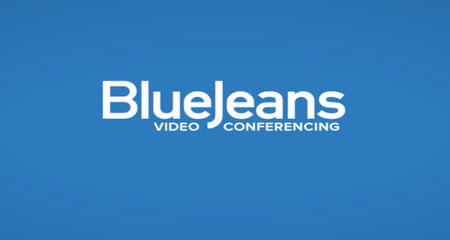
At fifth, we have ranked BlueJeans which comes with some exciting features. The video conferencing platform was acquired by Verizon, a major US carrier network, for about $500MN in May 2020.
Best-in-Class Audio Quality
The app offers exceptional audio quality- thanks to Dolby Voice. It is protected by AES 256-bit encryption which makes it the safest option among the best others.
A key advantage is that BlueJeans does not restrict users to time limits even to free subscribers. Although free subscribers will be able to add only 50 members.
Simple Interface
One great thing about this video conferencing app is its friendly user interface. Finding meeting options is not difficult because the buttons are enlarged on smartphones. The app also gives notifications about the internet strength in the upper right-hand corner.
To set up a meeting, you can just launch the app and hit on “My BlueJeans” and schedule a meeting. You can create a title and details and invite 25 users at first. BlueJeans also integrates the schedule with Google Calendar which sends a reminder to every email you have added about the meeting.
It has all the basic features common to its equivalents such as whiteboard sharing, screen sharing, meeting recording, etc. However, there are some inconveniences when it comes to BlueJeans.
Downsides
BluJeans does have its downsides though. It enforces only 50 member meetings for free subscribers. Users have also reported occasional lags during live videos. Its Windows variant is not fully functional on touchscreen computers too, adding more annoyance to the end-users.
The strength of BlueJeans is its Dolby’s HD audio enhanced further by noise cancellation which is hard to find on other platforms. It also provides a crystal-clear picture which is key to meeting members.
If you can remain content with a 50 members meeting, and audio/visual is your priority, BlueJeans by Verizon can be a good option for you.
4. Webex By Cisco
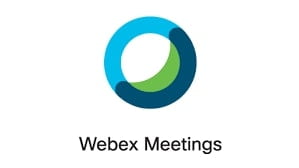
On the 4th, we listed the Webex video conferencing app. The company Webex was acquired by Cisco Systems in 2007 and now it has a very respectable 324 million users worldwide. The video conferencing platform offers an enterprise-level experience for free use.
Unlike BlueJeans, Webex has no 50 members meeting cap on it. You can have HD video meetings with up to 100 participants and enjoy options of screen sharing and also private chat rooms.
When you sign up for Webex Meetings, you are assigned a unique URL that you can use to invite others, manage your meetings and schedule them for later.
Although there is both the premium and the free package, the latter just works fine for most of us. It offers good 1GB cloud storage for recording videos in MP4.
Don’t miss: Get Cheap NTC Data Packs For Video Conferencing Apps
Premium Advantage
The biggest advantage of using Webex is that it allows meetings of unlimited numbers for unlimited lengths even for free subscribers. The platform uses AEX 256-bit encryption which is virtually impenetrable by hackers.
Webex is more digital than its peers for offering Webex Assistant for the voice assistant, and voice command features. It also has a closed caption option to complement the audio with text on the screen.
Other common features of this video-sharing app are its high-quality audio/visual, screen sharing, and whiteboard feature, etc.
Webex is available on both desktop and mobile platforms. But it gives a smoother meeting experience on desktop plus helps more with maneuvering between options and windows.
Download: Windows | Android | IOS
3. Microsoft Team
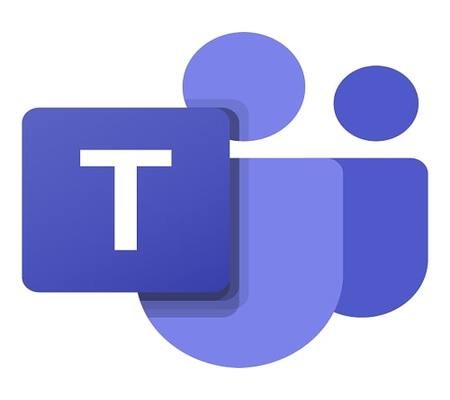
Third on our list is Microsoft Team, a product of IT conglomerate Microsoft corp. Shortly called MS Team or simply Team was launched in November 2016 as part of the Office 365 suite. Although a 5 years old product, it has seen a massive insurgence after the CVOID-19 pandemic.
MS Team integrates all the chat audio/visual and screen sharing functions within one app. It also allows users to engage in a single person’s meeting or in a group online with up to 100 participants.
Like on other platforms, Team users can also schedule meetings and send a reminder to others via email or a link. It allows external guests to join the meeting without even downloading the application. If they have the link to the meeting, they can simply click on it and they will enter the meeting from a web browser.
Do Read: Ncell Lockdown Packages with Work from home plan
Part of an Eco-System
MS Team is built as part of Microsoft’s ecosystem. It is fully integrated with Microsoft 365, a cloud-based suite consisting of Office products. This enables users to easily schedule and invite participants among individuals and organizations.
Best Features
Like any other premium video sharing platform, Microsoft Team also offers a broad range of features such as screen sharing, live recording, background blur, chat, and captions. Sync with Microsoft 365 makes it a perfect option for business professionals who engage in document work online.
Microsoft Team has truly come alive after the recent pandemic and has become an ideal option for organizations, business professionals, and individuals alike.
Download Microsoft Team: Windows | Android | IOS
2. Google Meet

Google Meet started out as Google Hangouts Meet as part of G Suite only as a paid service. But now the rebranded Google Meet became free in April last year to become the top-tier video conferencing solution amid the COVID-19 pandemic.
Initially, it was developed for organizations and education on a paid basis only. After it turned freemium last year, Google Meet allows a 60 minutes virtual meeting of up to 100 participants even for free subscribers. Which is one big reason many started choosing it and quickly proliferated worldwide.
What Is Exciting About It?
With an easy and fast interface, browsing within the app is very comfortable for users. For those on the web, downloading an app is not imperative. The external clients can simply join in through a web app experience.
Being a part of the Google Workspace platform, you can exchange data between applications. As it is integrated into large Google Service apps, including Google Calendar, you can schedule meetings and get reminders as per your will.
Premium users receive a dedicated dial-in number that employees can use and join the meeting on the go with good line quality. However, this feature is staying premium for now.
Google Meet was rebranded for mass customers to restrain the sensational rise of Zoom. After becoming a free platform, Google has brought several changes to its interface to facilitate it for larger masses and make it friendly to all age groups and not just business class.
Google Meet is Google’s flagship video conferencing solution. With a revamped interface and seamless integration among Google’s products, Google Meet makes scheduling, sharing links, and meeting easier.
Google Meet is also soft on device resources making it easy to run on lower-end devices which makes it accessible for customers of all walks of life. It has quickly risen to the fore and became an instant favorite for ‘work from home.
1. Zoom

It is easy to see Zoom at the top of video conferencing apps. Developed by Eric Yuan, a Chinese-American entrepreneur in 2011, Zoom stood in silence for years before it led a global breakout of its own popularity after COVID-19 turned pandemic.
Zoom not only has dominated the entire video conferencing scene, but it has also led others to change their strategies to reach wider audiences. After the lockdowns forced work from home, it has become the most sought-after vehicle to carry online tasks. Every teacher, student, parent, or business professional knows about this. It begs the question, why?
What Makes Zoom Stand Out?
We have talked about features on many video-sharing platforms already but it is Zoom that has stretched them to a revolutionary effect and that was just last year. Google Meet, MS Team, and BlueJeans did exist but they could not grasp the opportunity to make their platforms more accessible and more approachable.
The strength of Zoom is it is super easy to use. You do not need to sign up and have an account to join a meeting. You can have a meeting with up to 100 concurrent attendees. You can share a screen including the default whiteboard, web, or anything on the screen. These all come for free but it was not the norm before they became ridiculously popular following the COVID-19 scenarios.
Recommended Read: How to Avoid Bill Shock with Online Meetings?
Features
Zoom has led the video conferencing apps industry with its novel and unique set of features such as Screen Sharing, White Board, meeting recording, and file sharing which are common now but not until Zoom forced others to jump on the bandwagon. Zoom brought all these services to everyone without any charging which made it a runaway success amid the pandemic who started to ‘work from home.
Additionally, Zoom also provides very good audio and video quality, which was not always possible with the existing platforms. There is also a chat feature that allows participants in the meeting to type to the host or everyone or among themselves. However, the host can adjust the settings for all participants and also mute or unmute one attendee.
Zoom comes in both premium and free subscriptions. The premium version gives unlimited time length for meetings with participants and recording up to 1GB on the cloud freeing your space on the local device.
The most fascinating part of Zoom Premium is that it adds the ability to stream your Zoom meetings on social media such as Facebook and YouTube which helps expand the viewership multifold.
Well, the best part of Zoom is that its free version is perfectly capable of offering all the features which provide a premium video conferencing experience with 40 minutes being only a little quibble.
How To Sign Up?
While there is no need to sign up to join a meeting, you must have an account to host a meeting. To do this, simply go to zoom.us and sign up. You can also proceed with your Google or Facebook which simplifies the process.
After you are a verified user, you also get a unique URL and personalized meeting ID (a number sequence) which you can utilize to share with others over emails, or any other medium. You can also schedule your meetings on Google Calendar and sync them on the cloud in advance.
If you are satisfied with a 40-minute meeting, you are getting the best features to meet your standard video conferencing demands.
Zoom’s popularity is also reflected in the stats. It has Counting both free and paying users, Zoom has 300 million daily meeting participants. People have spent over 3.3 trillion minutes annually till now on Zoom further testifying to its global appeal. It registered 38 million downloads in January 2021 across the App Store & Google Play combined.
Download Zoom: Windows |Android |IOS
Which Apps Did Not Make the List?
Video chat has always been a part of internet users’ lives. Skype, Messenger Room, Emo, and Viber are among many other options to communicate audio/visual.
Check out: Top Video Streaming apps in Nepal
However, since the pandemic, a new wave of video-conferencing platforms began with features that meet the demands for large-scale meetings. This will continue in the future as the pandemic has drawn a silver lining that work from home is indeed possible.
So that was our list of the top 5 video conferencing apps. Are you using either of these or any other else? What features do you think make your platform distinct from the rest? Let us know your user experience in the comments section below.





